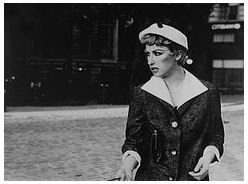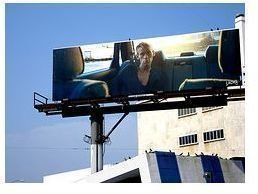Tableau Photography: A Visual Narrative
What is “Tableau” Photography?
A tableau vivant is a French phrase meaning “living picture.” Before photography was invented it was a popular pastime to recreate scenes from famous paintings at parties. Participants would dress up, use props, appropriate backgrounds and poses to re-stage the original image. A good example of this is included in Goethe’s “Elective Affinities” where the Count in the story suggests, “There are many well proportioned people here who are certainly capable of impersonating the movements and postures of paintings. Such tableaux demand a great deal of troublesome arrangements, I know, but they produce an unbelievable effect.” (P189) Since the invention of photography, tableaux vivants have remained a popular method to recreate old paintings as photographs and to create new narrative scenes in a tableau style captured as photograph. Early pioneers of the tableau photograph were David Octavius Hill and Robert Adamson who, in the 1840’s, created many staged portraits of famous men of the time. They also staged images of local fish wives, fishermen and working people. Hill and Adamson dramatically recreated pictures of soldiers in “action." With the rise of photography in the Victorian era, Julia Margaret Cameron created fantasy scenes such as Sir Lancelot and Queen Guinevere. This kind of fantasy image was very popular at the time, and inspiration was found from medieval times, Pre-Raphaelite painting and Arthurian legend. Although, tableau photography fell out of fashion with the rise in Realism, and Documentary photography became more popular as people wanted to see images of real life, people and places. In contemporary photography from the 1970’s, the tableau image has found favor with photographers who want to tell stories and recreate paintings or images in an innovative and creative way.
The Revival of the Tableau Image in the 1970s

The 1970’s was a time of experimentation in photography, and there was a rise in the use of performance art and photography among women. Cindy Sherman is a good example of how women began to express themselves through photographs in the public domain. Cindy Sherman’s “Film Stills” series dating from the late 1970’s to early 1980’s are all narrative tableau constructions that create archetypal women from B movies - posed, staged and lit to convey meaning and message. Sherman starred in every image, making herself into art. Sherman still creates tableau scenes that use herself in the image in a managed way to expose a character or tell a story. Bernard Faucon uses mannequins in his tableau photography, giving his work a surrealist edge. The line between fact and fiction becomes increasingly blurred as some of his images used a mixture of real people and mannequins; making the viewer look deeper into the image to discern what is real and what is not. Faucon’s career took off in 1976 with his exhibition “Les Grandes Vacances.” This work explored themes of childhood, with the children being replaced with mannequins who play with the elements fire, earth, water and sky. Faucon was obsessed with childhood and in 1995 his obsession came to an end as he retired from photography stating, “I had to eventually make true my claim to finish, my obsession with closing. This became The End of the Image.”
Contemporary Fictions

Contemporary artists and photographers have used the tableau to create stunning imagery that reflects modern society and has an underlying narrative. The use of theatrical or filmic lighting adds to the effect of the images. Philip-Lorca diCorcia” according to Charlotte Cotton in “The Photograph as Contemporary Art” uses lighting to “simulate naturalism and in anticipation of actors moving through the scene. The theatrical and psychological charge is also added by working at particular times of the day.” (P52) Philip-Lorca diCorcia in his “Hollywood” series (1990-1992) paid men that he met in Santa Monica Boulevard to pose for him. The title of each piece would include the man’s name, age, where he was born and how much he was paid. The images of these young men have connotations which suggest associations with the sex industry, as each man is being asked to pose for money. The images themselves have an ethereal, cinematic quality that places the men in juxtaposition to their surroundings. The men stand out, always alone in a man-made environment, beautifully shot and posed. Sam Taylor Wood uses the style of paintings or copies of painting in a modern environment to make tableaux vivants that emulate a baroque and bohemian style. The image “Soliloquy I” is an emulation of a Henry Wallis (1830-1916) painting. A man lays on a sofa lifeless; the sofa is a modern worn sofa with a dirty looking throw. The man’s arm hangs to the floor with the light coming from behind him. The tableau photograph lets the viewer make their own narrative picking up on clues within the image. Underneath the man in a smaller sequence of images a story of a man’s suicide is being told. The way that the images are represented have both the feel of an old painting but also a cinematic quality that moves the narrative.
Tableau photography allows photographers and artists to create a narrative and psychological tension that would not necessarily be present in a “straight” photograph. Charlotte Cotton writes in “The Photograph as Contemporary Art” that some tableau photography draws on; “specific imagery and cultural codes for their narratives, other photographers use the tableau formula for much more ambiguous and unreferenced narratives. A dreamlike quality is often created by reducing the specificity of a place and culture.” Staging photographs allows the photographer a higher degree of control over the image and, like a painting, allows the photographer to place inside the frame with absolute precision only what he or she wants the viewer to see. The tableau photograph is much closer to painting or theatre than other forms of photography and explores narratives in a similar way using the construction of the image and the mise-en-scene to tell the story.
References
Museé d’Orsay: Tableaux vivants. Victorian Photographic Fantasies (1840-1880)
The Utopian: Elemental Children: The Photography of Bernard Faucon
Daylight Magazine: Bernard Faucon: “The Most Beautiful Day of My Youth”
Harvard Education: Sam Taylor-Wood Interview
Charlotte Cotton, The Photograph as Contemporary Art, Thames & Hudson, London 2007
Cindy Sherman, The Complete Untitled Film Stills, Museum of Modern Art, New York, 2003
Image Credits
Image One: “Cupid Considering” by Julia Margaret Cameron 1872 Flickr CC
Image Two: “Untitled Film Still #23” by Cindy Sherman 1978 Flickr CC
Image Three: From the “Hollywood Series” by Philip-Lorca diCorcia 1990-1992 Flickr CC
